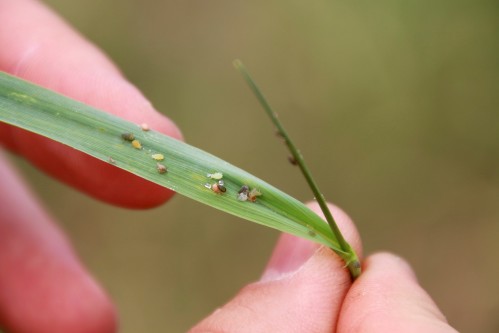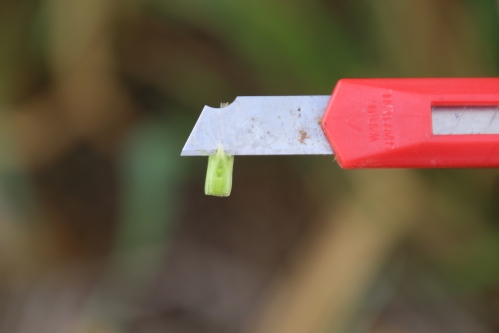Courtesy Oklahoma Wheat Commission
The 2021 wheat harvest has begun with several locations in Southwest, Oklahoma, reporting a successful weekend for grain being received. The following counties that received grain in elevator locations were Harmon, Jackson, Tillman, Cotton, Comanche, Kiowa and Greer. A few reports of sample loads being accepted in Frederick on Saturday, May 29th. Rain showers across Southwestern, Oklahoma, over the Memorial Day weekend hindered producers from making any progress over this past week until Saturday, June 5th. During this period, cooler temperatures, cloud cover and high moisture levels on the grain have slowed progress on harvesting the crop. Traditionally combines are rolling in Southwest, Oklahoma Memorial Day weekend or before, but unseasonable cool temperatures and rain has delayed the crop maturing. High quality and favorable test weights have been noted so far. Rains across Southwest, Oklahoma, late last night and early this morning have put harvest on standstill again in several regions, while in other areas producers hope to get rolling again later this afternoon, west of Tillman and Kiowa counties. In a large area of Tillman county, producers are reporting 3 to 5 inch rains last night, which will delay harvest another 4 to 5 days. Regions of Cotton and Comanche county locations received 1/10th to 2.5 inches of moisture depending on location.
Overall early wheat that has been harvested in Southwest, Oklahoma, indicates strong quality and decent yields. Yields reported varied depending on locations and producer management. Test weights are averaging 60 lbs./bu. or higher. While it is premature to report on protein, early numbers are ranging between 11 and 12 percent.
Grandfield/Devol- Harvest started over the weekend, although moisture last night will make it a late start today. More moisture was reported around Grandfield with less rain in the Devol area where combines will likely start up again. Test weights for this region being reported at 60 +. Yields around Grandfield and Devol have been favorable ranging from 40 to 50 bushels per acre. One field has been reported at 70 bushels per acre.
Frederick/Chattanooga- The past two days have been successful for harvest in this region, but heavy rains last night across Tillman County is going to hinder harvest most likely another 4 to 5 days depending on the location. Three to five inch rains from elevator managers in this region being reported today. Areas of heavy rain did not report on Mesonet due to the nature of pop- up storms. Test weights ranging from 60 to 61 lbs./bu. Yields in this region not being reported as favorable as Comanche County but still ranging from the high 30’s on heavily grazed wheat to the mid 40’s on early cuttings.
Altus/Duke- Harvest was successful in this region over the weekend, while light moisture and humidity will most likely hinder harvest in Altus. Little rain was received out at Duke so producers are hopeful combines in this area as well as in Harmon and Greer Counties will move later today. Note: much of the wheat in Harmon and Greer counties was cut for hay due to the excessive ongoing drought in this region. Test weights in this area being reported at 61 to 62 lbs./bu. Yields being reported from high 30’s to mid 60’s on fields with extremely progressive management systems.
Lone Wolf/Hobart-Producers also had success with harvesting in this region over the past two days. Light rains and higher humidity will likely hinder an early start to harvest today in most places, certain regions may be delayed longer from getting into the fields in Kiowa county. Test weights in this region averaging 62.4 lbs./bu. Yields being reported from the mid 30’s to mid 50’s depending on location and management.
Sentinel/Rocky- While it was close to starting this weekend at these locations, light rains today will most likely hinder harvest another couple days in this area. No wheat was reported as taken in at these locations over the weekend.
Enclosed, see the 14-Day and 12-Hour rainfall accumulation maps with the 7-day weather forecast for Oklahoma.
The next harvest report by the Oklahoma Wheat Commission will be published Wednesday, June 9, 2021.
































